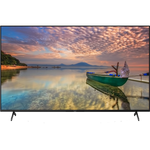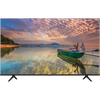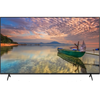A comparison of specs, key information, reviews, and best pricing from top retailers
Last updated -- hours ago | Report incorrect information
What we think

The PerfectRec TV team Learn more
Updated January 10, 2024·
Considering the Hisense A6H and the Sony X80K, here are the tradeoffs: The Hisense A6H has a budget-friendly price but performs less well in bright rooms and for viewing sports. Its dark room performance is also lower, which may affect movie-watching in a dark environment. The Sony X80K is more expensive but offers better performance for sports and in bright rooms, making it a better choice if these aspects are important to you. It also handles reflections well and offers superior motion processing, which is beneficial for fast-paced content and gaming. Give Feedback
this description is based on the product variant with some specs and product variant with some specs. At the time of writing, the variant with some specs cost some dollars and the variant with some specs cost some dollars.
Advantages of the Hisense A6H (LCD)
- The Hisense A6H (LCD) has no clear advantages over the Sony X80K (LCD).
Advantages of the Sony X80K (LCD)
- Good for sports
- Good for news, talk, & other TV
- Good for cartoons & animation
- Best in class for upscaling
- Best in class motion processing
Key differences
Picture Quality
5.2


6.0
3.35/10
CONTRAST
5.06/10
6.1/10
COLOR VOLUME SCORE
6.6/10
LED
PANEL TYPE
LED
IPS
PANEL SUB-TYPE
IPS
The Sony X80K (LCD) has only fair picture quality, while the Hisense A6H (LCD) has poor picture quality.
Movies & TV
4.9


5.5
3.35/10
CONTRAST
5.06/10
5.4/10
BLACK UNIFORMITY
5.2/10
7.5/10
UPSCALING
10.0/10
Yes
HDR10 SUPPORT
Yes
Yes
HDR10+ SUPPORT
No
Yes
DOLBY VISION SUPPORT
Yes
The Sony X80K (LCD) and Hisense A6H (LCD) are both poor for movies & TV, though the Sony X80K (LCD) is somewhat better.
The Hisense A6H and Sony X80K both suffer from poor black uniformity, which is essential for deep blacks in dark scenes, making them less suitable for watching movies and cinematic TV where contrast and black levels are very important. Additionally, they do not have features like local dimming which can improve contrast, and their colors out of the box may not be as accurate or vibrant as needed for a true cinematic experience.
Sports
6.1


7.4
2.5/10
MOTION PROCESSING
10.0/10
60Hz
REFRESH RATE
60Hz
10.0/10
INPUT LAG SCORE
8.7/10
7.5/10
UPSCALING
10.0/10
5.5/10
SDR BRIGHTNESS SCORE
7.5/10
Yes
HLG SUPPORT
Yes
The Sony X80K (LCD) is good for sports, while the Hisense A6H (LCD) is only fair.
Cartoons & Animation
5.7


7.2
5.9/10
COLOR GAMUT SCORE
7.1/10
6.1/10
COLOR VOLUME SCORE
6.6/10
5.5/10
SDR BRIGHTNESS SCORE
7.5/10
8.3/10
COLORS OUT OF THE BOX SCORE
8.5/10
7.7/10
GRAY UNIFORMITY
8.0/10
The Sony X80K (LCD) is good for cartoons & animation, while the Hisense A6H (LCD) is poor.
The Hisense A6H has poor performance in both colors out of the box and color gamut, which directly influences the vibrancy and accuracy of visuals, resulting in less appealing cartoon and animation playback. In contrast, the Sony X80K performs well in these areas, delivering more accurate and vivid colors that enhance the viewing experience for such content.
News, Talk, & Other TV
5.8


7.2
5.5/10
SDR BRIGHTNESS SCORE
7.5/10
7.5/10
UPSCALING
10.0/10
The Sony X80K (LCD) is good for news, talk, & other TV, while the Hisense A6H (LCD) is poor.
The Sony X80K performs better in upscaling lower resolution content and exhibits higher SDR brightness, which enhances the clarity and visibility of news and talk shows, while the Hisense A6H falls short in these areas, resulting in a less optimal experience for such programming. Although both TVs lack local dimming, which affects contrast quality, the Sony's superior color accuracy out of the box and a wider color gamut also contribute to a more vibrant and appealing image for everyday TV programs compared to the Hisense A6H.
Bright Room
5.4


6.4
7.8/10
VIEWING ANGLE
7.5/10
5.5/10
SDR BRIGHTNESS SCORE
7.5/10
5.3/10
HDR BRIGHTNESS SCORE
6.1/10
6.0/10
REFLECTIONS SCORE
6.0/10
The Sony X80K (LCD) is only fair for bright room, while the Hisense A6H (LCD) is poor.
The Hisense A6H struggles in bright rooms due to its poor SDR and HDR brightness and only fair reflection handling, making it less suitable for well-lit environments. In contrast, the Sony X80K performs better with good SDR brightness and similar reflection handling, thus providing a more satisfactory viewing experience in brighter settings.
Cost
$650


$798
$200
$400
$600
$800
$1,000
$1,200
The Hisense A6H (LCD) has a price of $650 and the Sony X80K (LCD) costs $798.

Let Us Help Find Your Perfect TV
Find your new TV
Key similarities
Gaming
5.7


5.8
5.9/10
RESPONSE TIME SCORE
6.2/10
10.0/10
INPUT LAG SCORE
8.7/10
2.5/10
MOTION PROCESSING
10.0/10
0.0/100
GAMING LOCAL DIMMING
0.0/100
5.4/10
GAME HDR BRIGHTNESS SCORE
6.3/10
The Sony X80K (LCD) and Hisense A6H (LCD) are both poor for gaming.
The Hisense A6H has a poor response time, which can lead to motion blur during fast-paced games, while the Sony X80K has a fair response time, slightly better for gaming but still not ideal. Both the Hisense A6H and the Sony X80K have a 60Hz refresh rate and the Hisense A6H has the best input lag performance, beneficial for gaming responsiveness, but the Sony X80K's input lag performance is only fair, potentially causing a delay between a user's action and the on-screen reaction.
Give feedback
We’re constantly working to improve.
How the Hisense A6H (LCD) and the Sony X80K (LCD) compare to other TVs
Spec Comparison
| Hisense A6H (LCD) | Sony X80K (LCD) |
GENERAL | |||
|---|---|---|---|
| Price | |||
$650 | $798 | ||
Brand | |||
Brand | Hisense | Sony | |
Release Date | |||
Release Date | April 3, 2022 | March 4, 2022 | |
Full name | |||
Full name | 65A6H | KD-65X80K | |
Screen Size | |||
Screen Size | 65" | 65" | |
Screen Resolution | |||
Screen Resolution | 4K | 4K | |
TV FEATURES | |||
|---|---|---|---|
Operating System | |||
Operating System | Google TV | Android TV | |
Sound Quality Score | |||
Sound Quality Score | 6.1/10 | 6.7/10 | |
NextGen Ready | |||
NextGen Ready | No | Yes | |
HDMI Ports | |||
HDMI Ports | 4 | 4 | |
Coax Ports | |||
Coax Ports | 1 | 1 | |
DISPLAY QUALITY SCORES | |||
|---|---|---|---|
Picture Quality Score | |||
Picture Quality Score | 5.3/10 | 6/10 | |
Bright Room Score | |||
Bright Room Score | 5.4/10 | 6.4/10 | |
Gaming Score | |||
Gaming Score | 5.8/10 | 5.9/10 | |
Movies & TV Score | |||
Movies & TV Score | 5/10 | 5.5/10 | |
Sports Score | |||
Sports Score | 6.1/10 | 7.4/10 | |
PHYSICAL | |||
|---|---|---|---|
Dimensions w/o Stand (H x W x D) | |||
Dimensions w/o Stand (H x W x D) | 32.8" x 57.2" x 2.9" | 32.9" x 57.2" x 2.8" | |
Dimensions with Stand (H x W) | |||
Dimensions with Stand (H x W) | 35.3" x 57.2" | 35.6" x 57.2" | |
Weight without Stand | |||
Weight without Stand | 36.4 lbs | 47.8 lbs | |
VESA Mount | |||
VESA Mount | 400 x 300 | 300 x 300 | |
DISPLAY | |||
|---|---|---|---|
Color Depth | |||
Color Depth | 10 bit | 10 bit | |
Black Frame Insertion | |||
Black Frame Insertion | No | Yes | |
Auto Low Latency Mode | |||
Auto Low Latency Mode | Yes | Yes | |
Contrast | |||
Contrast | 3.4/10 | 5.1/10 | |
Local Dimming | |||
Local Dimming | 2.5/10 | 2.5/10 | |
SOUND | |||
|---|---|---|---|
Speaker Setup | |||
Speaker Setup | 2.0 | 2.0 | |
Speaker Power | |||
Speaker Power | 28 W | 20 W | |
Dolby Atmos | |||
Dolby Atmos | Yes | Yes | |
DTS:X | |||
DTS:X | Yes | Yes | |
Shopping
Sony X80K (LCD)
See more
Dig into reviews and images
Tom's guide
Matthew Murray | February 2023
"The Sony Bravia X80K is an inexpensive LCD TV that turns out pleasing visuals and is armed with a number of other desirable features. Sony’s robust internal processing, results in generally better picture quality than you’ll usually get for this price. In practice, the X80K is satisfying to watch. You’re not going to get as sumptuous a picture as you may with other TVs from Sony or other companies, but we didn’t encounter anything that looked bad on it."
Get a great deal on the Hisense A6H (LCD) or the Sony X80K (LCD)
About Hisense
Hisense, a Chinese TV manufacturer, entered the US market in approximately 2011 and has since acquired TV divisions from various companies such as Toshiba, Sharp, Hitachi, and NEC. Currently ranking as the fourth largest vendor in terms of sales volume, Hisense aims to capture a wide range of TV budget segments. They offer exceptional value with TVs that often outperform their competitors at similar price points, making them a compelling choice for consumers. In the US, they use Google TV as their smart TV software which provides the largest app selection and a very modern user interface, however it is not as user friendly as the software from other vendors.
About Sony
Sony stands as a highly experienced and widely trusted TV manufacturer, earning a reputation that surpasses all others. A Japanese company, Sony has been making TVs for far longs than it has been making Playstation game consoles. Sony's high-end TVs are often regarded as the ultimate choice for videophiles, representing the epitome of quality, albeit at a premium price point. Renowned for their advanced and precise motion handling, as well as their cutting-edge local dimming algorithms, Sony consistently delivers unparalleled performance in these areas. They include Google TV software with all their TV sets, which grants access to the largest selection of apps available and they also include Bravia Core which is a movie streaming platform specifically for Sony TVs that offers higher picture quality by using more bandwidth.
Give feedback
We're constantly perfecting our model
TV guides you might be interested in
More comparisons for you
FAQs
FAQs about TVs
Why trust us
This information was produced and vetted by the PerfectRec TVs team. We are a product research and recommendation organization that meticulously reviews and evaluates the latest TV information and makes it digestible for you.
By the numbers
385
TVs evaluated
33,110
TVs stats compiled
21
Proprietary TVs ratings developed
122,730
Recommendations made
18,410
Consumer hours saved
About the TV team
Joe Golden, Ph.D
CEO and TVs Editor
Joe is an entrepreneur and lifelong electronics enthusiast with a Ph.D in Economics from the University of Michigan.
Jason Lew
Staff Expert & Software Engineer
Jason is a staff expert and software engineer that has been making laptop recommendations for 7 years and moderates one of the largest laptop subreddits.
Chandradeep Chowdhury
Staff Expert & Software Engineer
Chandradeep is a staff expert and software engineer and expert in televisions and monitors. He’s been making monitor recommendations for ten years.
Jaime Roldán
TVs Expert
Jaime is a Colombia-based TV expert. He is an electronics engineer with 8 years of experience in the telecom sector and has been making TV recommendations for 12 years.







